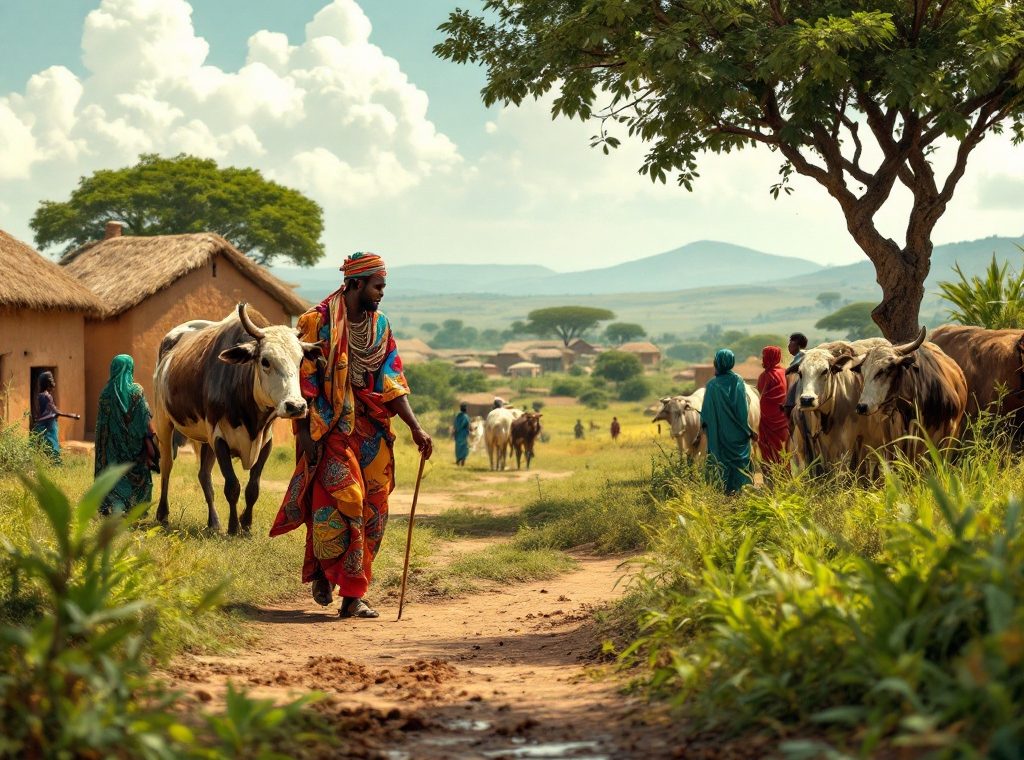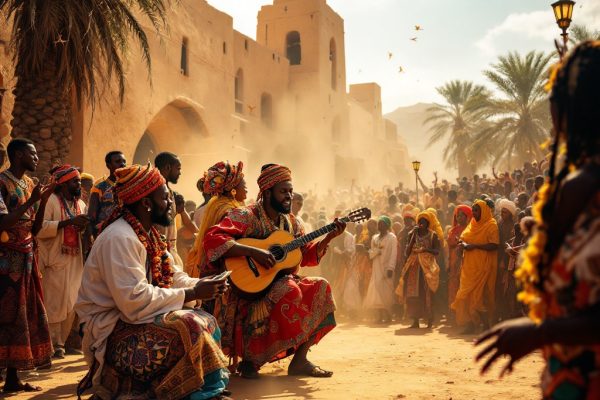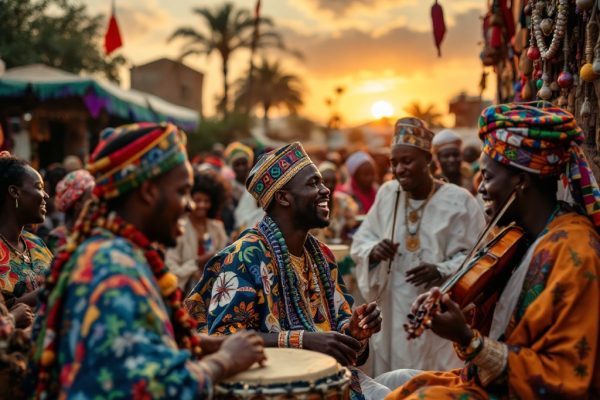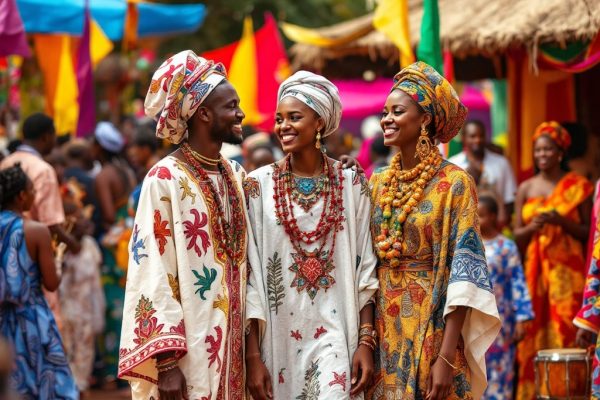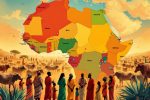What Was a Distinctive Feature of the Fulbe in West Africa?
Discover the fascinating world of the Fulbe people of West Africa, renowned for their vibrant culture and unique pastoral traditions. Unlike other nomadic groups, the Fulbe skillfully blend herding with settled agriculture, creating a resilient mixed economy. Explore their rich artistic heritage, expressed through music, dance, and storytelling, deeply rooted in their Islamic faith and the Fulfulde language. Learn how the Pulaaku code shapes their social hierarchy and community bonds. Delve into their remarkable adaptability and the challenges they face in a changing environment. Uncover the secrets of their success and the intricacies of their pastoral lifestyle. Read on to learn more about this captivating culture.
Important information
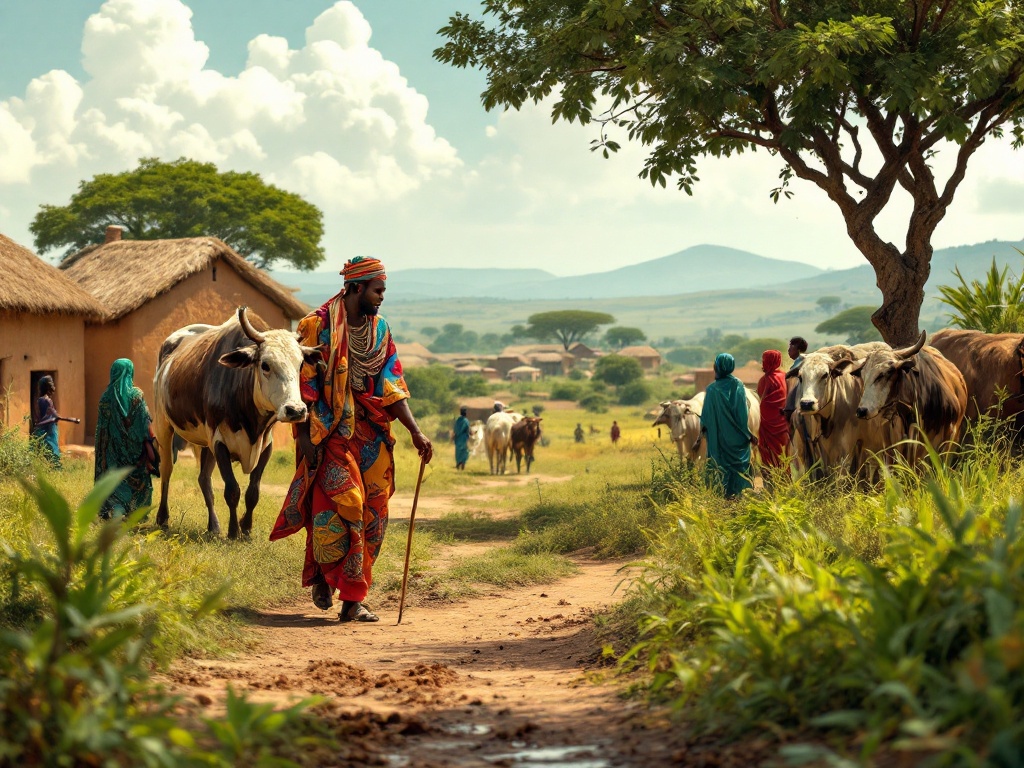
- The Fulbe, also known as Fulani, are pastoralists in West Africa known for a mixed economy that combines herding cattle, sheep, and goats with settled agriculture and trade.
- Their culture is rich in music, dance, and storytelling, expressed through the Fulfulde language (Pulaar), and deeply rooted in Islamic faith.
- Pulaaku, their code of conduct, emphasizes respect, hospitality, and dignity, shaping their social structure and interactions.
- Unlike purely nomadic herders, their adaptability and integration of farming practices provide economic stability and resilience in changing environments.
- Seasonal migration for grazing and sophisticated animal management techniques are central to their pastoral lifestyle, yet they actively participate in trade with settled communities.
Who Are the Fulbe and Their Distinctive Features in West Africa?
The Fulbe, also known as the Fulani, are a West African people renowned for their pastoralist traditions and close-knit communities. Unlike other Asian pastoralists, they’ve embraced village life, developing a vibrant culture rich in music, dance, and storytelling. These art forms are not only central to Fulbe identity but have also significantly enriched West African heritage, cementing the Fulbe’s artistic legacy.
Fulbe Cultural Identity and Community
The Fulbe people, primarily Muslim, have a rich cultural identity grounded in their pastoral traditions. Their artistry and Islamic faith are essential to this identity, expressed through the Fulfulde language (also known as Pulaar). Fulfulde connects Fulbe communities across West Africa and is key to their vibrant oral traditions. These traditions include storytelling, music, and poetry, often reflecting their pastoral lifestyle and Islamic beliefs. The Fulbe’s commitment to Islamic education, seen in their many Quranic schools, further strengthens their cultural ties. Seasonal cattle migrations, a crucial part of Fulbe tradition, shape their social structures and community organization. Known for their intricate crafts, the Fulbe produce beautiful textiles and jewelry, demonstrating exceptional artistic skill. Their unique clothing, decorated with bright colors and elaborate beadwork, further highlights their distinct cultural identity.
Pulaaku and Social Hierarchy
Pulaaku, a vital code of conduct for the Fulbe people, emphasizes values such as respect, hospitality, and dignity. These principles shape their social structure and guide their interactions, reinforcing their shared identity and strengthening community bonds. Pulaaku is essential to Fulbe culture.
Pastoral Traditions and Mixed Economy
The Fulbe people maintain a vibrant mixed economy, combining pastoralism with agricultural pursuits. Their herds of cattle, sheep, and goats are central to their livelihood and economic well-being. However, their economic activities extend beyond nomadic herding, encompassing active participation in markets and settled farming. This diversified approach distinguishes them from groups solely dependent on livestock.
Fulbe Pastoralism
Fulbe society is deeply shaped by pastoralism. It influences their social structures, economic activities, and cultural identity, making it a defining characteristic of their people.
Adaptability
The Fulbe demonstrate remarkable adaptability by blending nomadic herding with settled agricultural practices. This flexibility allows them to respond effectively to environmental conditions and economic opportunities, preserving their pastoral traditions while engaging in trade and farming within settled communities.
The Role of Pastoralism in Fulbe Society
Pastoralism is central to Fulbe society, shaping their economy and social structures. Livestock is their primary food source and a cornerstone of their cultural identity. Owning herds also brings higher social standing. The Fulbe’s seasonal migrations further intertwine their culture and community with this pastoral lifestyle. While herding is paramount, they also engage in agriculture, creating a mixed economy influenced by interactions with farming villages. This might involve trading livestock for crops. This economic integration distinguishes them from other groups in the region.
Integration of Nomadism and Settlement
The Fulbe people demonstrate remarkable adaptability by combining nomadic herding with settled farming, allowing them to flourish in diverse environments and navigate changing resource availability. This dual approach ensures both their cultural preservation and economic security. Unlike purely nomadic groups, who often face hardship when resources dwindle, the Fulbe’s diversified economy offers a crucial safety net. This flexibility also facilitates easier integration into various societies. The Fulbe’s adaptive strategy has allowed them to maintain their unique cultural identity while successfully integrating into a variety of different social and ecological contexts.
Social and Economic Practices
The Fulbe people are traditionally nomadic herders, raising cattle, sheep, and goats, while also incorporating farming into their economy. Their pastoral lifestyle necessitates both mobility and environmental adaptability. For instance, seasonal herd movements allow them to find optimal grazing lands. Their sophisticated animal management techniques include controlled breeding and disease prevention. These pastoral traditions have molded their social structures, emphasizing flexibility and resilience. However, shifting environmental conditions now pose significant challenges to this time-honored way of life. The Fulbe people’s adaptability is evident in their diverse economic activities.
Traditional Pastoralism
The Fulbe are renowned for their nomadic herding practices, primarily focusing on raising:
- cattle,
- sheep,
- goats.
Adaptability and Resilience
Their pastoral lifestyle demands both mobility and adaptability to varying environments. This is exemplified by:
- seasonal herd movements to optimize grazing,
- sophisticated animal management, including controlled breeding and disease prevention.
These traditions have shaped their social structures, fostering flexibility and resilience. However, changing environmental conditions present significant challenges to their way of life.
Traditional Livelihood and Social Structures
The Fulbe people lead a multifaceted life, blending herding with farming. This mixed approach results in a complex social structure, where clans and livestock roles define the hierarchy. Elders guide community decisions, reflecting the importance of family ties. Each family unit manages its own herds and trade, yet their proximity to farming villages fosters vital economic partnerships, such as exchanging animals for crops. This distinguishes them from the nomadic herders of inner Asia, as the Fulbe have developed a more settled and integrated existence, relying on both their herds and surrounding agricultural communities for their livelihood.
Livestock Mobility and Herding Techniques
The Fulbe people are nomadic pastoralists who migrate with the seasons. This ensures their livestock have access to fresh grazing lands and water sources. Their time-honored herding traditions demonstrate a deep understanding of animal husbandry and skillful resource management. These vital practices underpin the Fulbe’s pastoral lifestyle and economic security.

